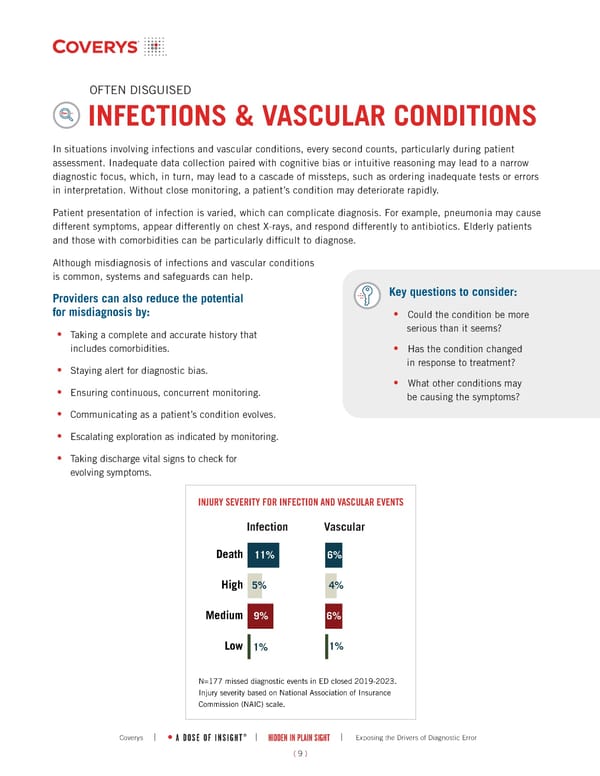OFTEN DISGUISED INFECTIONS & VASCULAR CONDITIONS In situations involving infections and vascular conditions, every second counts, particularly during patient assessment. Inadequate data collection paired with cognitive bias or intuitive reasoning may lead to a narrow diagnostic focus, which, in turn, may lead to a cascade of missteps, such as ordering inadequate tests or errors in interpretation. Without close monitoring, a patient’s condition may deteriorate rapidly. Patient presentation of infection is varied, which can complicate diagnosis. For example, pneumonia may cause different symptoms, appear differently on chest X-rays, and respond differently to antibiotics. Elderly patients and those with comorbidities can be particularly difficult to diagnose. Although misdiagnosis of infections and vascular conditions is common, systems and safeguards can help. Providers can also reduce the potential for misdiagnosis by: • Taking a complete and accurate history that includes comorbidities. • Staying alert for diagnostic bias. • Ensuring continuous, concurrent monitoring. • Communicating as a patient’s condition evolves. • Escalating exploration as indicated by monitoring. • Taking discharge vital signs to check for evolving symptoms. ( 9 ) INJURY SEVERITY FOR INFECTION AND VASCULAR EVENTS Infection Vascular Low Medium High Death 1% 9% 5% 4% 11% 6% 1% 6% N=177 missed diagnostic events in ED closed 2019-2023. Injury severity based on National Association of Insurance Commission (NAIC) scale. Key questions to consider: • Could the condition be more serious than it seems? • Has the condition changed in response to treatment? • What other conditions may be causing the symptoms? | HIDDEN IN PLAIN SIGHT | Exposing the Drivers of Diagnostic Error A DOSE OF INSIGHT ® Coverys |
 Hidden in Plain Sight: Exposing the Drivers of Diagnostic Error Page 9 Page 11
Hidden in Plain Sight: Exposing the Drivers of Diagnostic Error Page 9 Page 11